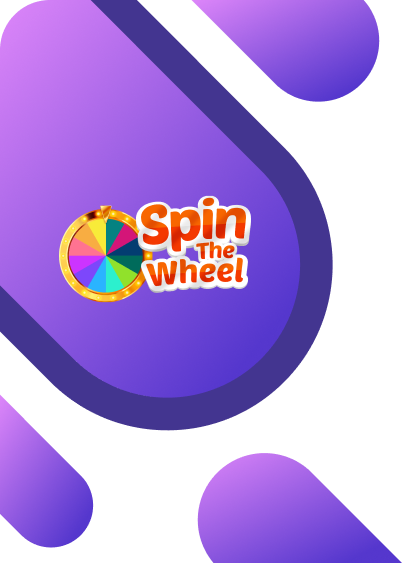The Boredom of Everyday Decisions
Every day we make hundreds of small choices — what to eat, where to go, which task to tackle first. Most of the time, these decisions drain mental energy. Psychologists call it decision fatigue — the gradual decline in decision quality after long periods of choice-making.
But what if you could turn those small, mundane moments into something fun, unpredictable, and motivating? That’s exactly what tools like Spinthewheel.net make possible. By turning randomness into play, they transform everyday decision-making into a personal game.
In this article, we’ll explore how gamifying your life with digital wheel spinners can improve productivity, boost creativity, and make your day more enjoyable — all while giving your brain a refreshing break from the pressure of constant decision-making.
The Psychology of Gamification
Gamification means applying game design elements — like challenges, rewards, and randomness — to everyday activities. According to research from Harvard Business Review, gamification works because it activates the brain’s reward system, creating positive feedback loops that encourage engagement.
When you use a digital spinner like Spinthewheel.net to choose what to do next, you’re introducing playful unpredictability into an otherwise predictable environment. This uncertainty triggers dopamine release — the same chemical response that makes games exciting.
It’s not about winning or losing; it’s about adding emotional texture to decisions that would otherwise feel routine. The spin becomes a small moment of anticipation, followed by immediate feedback — two key ingredients for sustained motivation.
Decision Fatigue and How Randomness Helps
The human brain is remarkably efficient but easily overwhelmed. Studies from Stanford University suggest that willpower and decision-making energy function like a muscle: the more you use them, the more they fatigue.
By outsourcing small decisions to a random spinner, you reduce cognitive load. You no longer need to debate what to cook for dinner or which task to start first — you simply let the wheel decide. This psychological trick reduces friction, enabling momentum and freeing mental resources for higher-level thinking.
The irony is that by surrendering a little control, you actually regain energy and focus. Randomness becomes a form of structured simplicity.
How Spinthewheel.net Works
At its core, Spinthewheel.net is a customizable digital wheel spinner. You can add your own list of options — from daily chores to study topics — and let the wheel select one at random.
Its value lies in flexibility:
-
You can customize the number of segments and labels (for example, “Workout,” “Read,” “Call a Friend”).
-
You can assign colors and themes to visually differentiate choices.
-
It includes sound and animation effects that mimic real-world spinning wheels, increasing immersion.
Behind the scenes, the wheel uses pseudorandom number generation to ensure each outcome is unpredictable yet statistically fair. In short, it’s simple enough for personal use but built with the same randomization logic found in professional-grade gaming tools.
Turning Everyday Tasks into Micro-Games
Gamification thrives on small wins. When you turn daily chores or goals into interactive challenges, you trick your brain into viewing them as opportunities rather than obligations.
Here are a few creative examples of how to integrate Spinthewheel.net into daily life:
1. The “What Should I Do Next?” Wheel
Create a wheel with tasks like “Clean Desk,” “Respond to Emails,” “Go for a Walk,” and “Plan Tomorrow.” Spin it when you’re stuck — it removes indecision and builds momentum.
2. The “Dinner Decision” Wheel
Add your go-to meals. Instead of arguing with family or partners, spin to decide. It prevents repetitive choices and adds novelty to the routine.
3. The “Study Topic” Wheel
For students, randomizing topics makes study sessions feel more dynamic. It prevents procrastination by adding surprise and variety.
4. The “Weekend Adventure” Wheel
List small activities like “Try a new café,” “Visit a park,” or “Watch a documentary.” It turns free time into a series of spontaneous micro-adventures.
5. The “Fitness Motivation” Wheel
Spin between exercise options — yoga, cycling, push-ups, or a short run. The randomness removes resistance to starting by keeping workouts unpredictable.
When repeated consistently, these small games rewire how you perceive everyday effort: from should do to want to do.
Why Randomness Boosts Motivation
From a psychological standpoint, the power of randomness lies in variable reinforcement. As explained in B.F. Skinner’s operant conditioning research, unpredictable rewards create stronger engagement than predictable ones.
When you let a wheel choose your next action, you’re blending anticipation with instant feedback, which mirrors how our brains respond to games and rewards. This not only boosts short-term motivation but also improves habit formation over time, as the experience feels intrinsically rewarding.
Instead of dreading a task, you begin to associate it with curiosity: What will the wheel say this time?
The Neuroscience of Play and Decision Relief
Play, in any form, activates the prefrontal cortex, improving creativity and reducing stress. According to Dr. Stuart Brown, founder of the National Institute for Play, playfulness isn’t just for children — it’s a biological necessity for emotional regulation and problem-solving.
By adding a simple element of chance, digital wheels restore a sense of play to adult life. They momentarily shift decisions from rational analysis to emotional spontaneity — allowing the brain to reset.
This makes randomization not just a productivity tool but a subtle form of self-care.
Integrating Gamified Decisions into Daily Systems
To get the most benefit from using Spinthewheel.net, it’s best to integrate it into your existing personal systems — not replace them.
For time management: Pair the spinner with a planner or to-do list. Use the wheel to select which task to start next, but still track progress manually.
For habit-building: Use it to break monotony within routines. Randomize the order of your morning habits to make them feel fresh without changing the habits themselves.
For teamwork or classrooms: Teachers and managers use the wheel to assign tasks or questions randomly, creating an environment of fairness and shared participation.
The key is intentionality — randomness should serve structure, not replace it.
When Randomness Fails (and How to Fix It)
While gamified decision-making can be powerful, it has limitations. Random outcomes may not always align with urgency, context, or energy levels.
To avoid frustration, consider using weighted randomness — assigning higher probabilities to tasks that matter more. Spinthewheel.net allows such customization, giving you both freedom and direction.
You can also apply constraints — for example, only including realistic options or spinning at set times of day. This keeps randomness meaningful rather than chaotic.
The Social Side of Spinning
Beyond productivity, digital wheels foster connection. Families use them for dinner plans, teachers for classroom engagement, and teams for icebreakers or brainstorming sessions.
The randomness removes bias from group decisions. It’s no longer about who chooses, but what the wheel decides. This sense of impartiality builds fairness and inclusivity, echoing the concept of procedural justice in social psychology — the perception that fair processes matter as much as fair results.
In group settings, randomness isn’t just fun; it’s diplomacy in motion.
Diagram – The Gamified Decision Loop
Task List → Add to Wheel → Spin → Random Selection → Action → Reward → Motivation → Repeat
↑ ↓
Novelty & Anticipation Reinforce Engagement
This simple feedback loop explains why randomization keeps people engaged. Each completed cycle strengthens motivation for the next one, transforming daily routines into an ongoing, interactive game.
My Personal Experience — The Productivity Wheel
When I first experimented with Spinthewheel.net, I was buried under a long list of unfinished creative projects. I couldn’t decide where to start, so I made a wheel with each project as a slice. The first spin landed on “Finish Article Draft.” I did it — and it felt surprisingly satisfying.
Over the next month, I used the same method for everything: emails, reading, workouts. The unpredictability removed hesitation. Eventually, I realized that what I’d created wasn’t just a productivity tool — it was a mindset shift. The act of spinning made each decision feel like a small adventure.
Insights – The Deeper Value of Playful Randomness
Gamifying your life doesn’t mean ignoring structure or responsibility. It means using play as a catalyst for better engagement, creativity, and mental balance.
Randomness teaches flexibility. It reminds us that not every decision requires deep analysis — that sometimes progress begins when we stop overthinking. By trusting the spin, we train ourselves to move forward even when the path isn’t clear.
In that sense, a digital wheel isn’t childish — it’s philosophical. It embodies the idea that freedom sometimes begins where control ends.
People Also Ask
1. What is Spinthewheel.net used for?
It’s a free online tool for creating customizable random wheels used for decisions, games, and group selections.
2. Is it truly random?
Yes, outcomes are generated through pseudorandom algorithms, ensuring fairness across spins.
3. Can Spinthewheel.net help with productivity?
Yes, by reducing decision fatigue and making choices playful, it can boost motivation and focus.
4. Is it safe to use?
The platform runs client-side in your browser, meaning your data isn’t shared externally.
5. Can I use it for classrooms or events?
Absolutely. Many educators and teams use it for interactive activities and random participation.
10 Frequently Asked Questions (FAQs)
1. How do I create a custom wheel?
Visit Spinthewheel.net, click “Create New Wheel,” add your choices, and adjust colors or labels.
2. Can I save my wheels?
Yes, registered users can save and reuse wheels, while casual users can export them locally.
3. Can I control probabilities?
Yes, you can assign weights to certain segments for higher or lower odds.
4. Does spinning work offline?
Yes, once loaded, most basic features function without internet connectivity.
5. Can I embed my wheel on a website?
Spinthewheel.net offers shareable links and embeddable widgets for online use.
6. What makes randomness useful for decision-making?
It removes emotional bias, helping users take action instead of overanalyzing options.
7. How is fairness ensured?
Through standardized random number generation and uniform probability distribution.
8. Are there mobile versions?
Yes, the tool is optimized for both iOS and Android browsers.
9. Can randomness become counterproductive?
Only if overused. Random decisions work best for low-stakes choices or creative exploration.
10. How can I gamify my entire routine?
Start small — use a wheel for daily tasks, challenges, or habits. Over time, it creates a sense of playful structure.
Spin Your Way to a More Playful Life
In a world dominated by efficiency, turning life into a small game can be a quiet act of rebellion. Spinthewheel.net reminds us that choice doesn’t always need to be rational to be meaningful. Sometimes, all we need is a gentle nudge from randomness to rediscover excitement in the ordinary.
By gamifying your routine, you’re not just adding color to your day — you’re reshaping how you experience control, motivation, and joy. The next time you face a dull decision, don’t overthink it. Add it to your wheel, give it a spin, and let curiosity guide the way.
After all, every spin is a reminder that even everyday life can feel like play when you design it to be.



